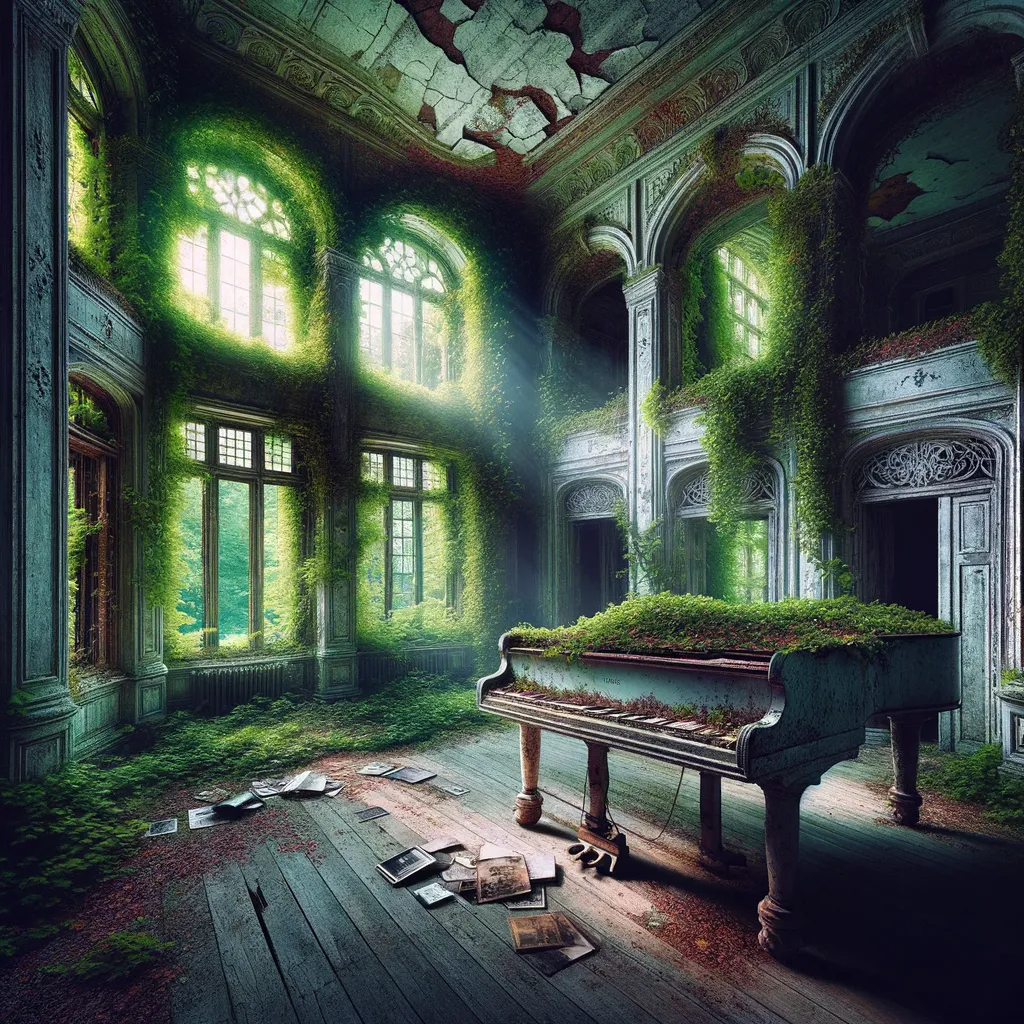Whispers of Time: Unearthing Secrets in Forgotten Walls
Amidst the encroachment of modernity and nature’s gentle embrace, a forgotten structure revealed itself, cloaked in the whispers of its past. As I stepped through the creaking door, the air thick with nostalgia, the dust danced like memories long dormant, inviting me into a world where laughter and tears once intertwined. With each creaking floorboard, I unearthed remnants of lives lived—an old piano, silent yet resonant with dreams, beckoned me to breathe life back into its wooden soul. The vision of restoration blossomed, merging my creative spirit with the building’s history, crafting a tapestry where past and present would forever entwine. Standing in the doorway, I realized that this sanctuary had transformed into a vessel for shared experiences, urging me to ponder the stories we inherit and the legacies we leave behind.
In the memory of May 4, 2002, I stumbled upon a forgotten structure nestled between modernity’s relentless march and nature’s quiet reclaiming. It stood defiantly, its crumbling bricks whispering tales of lives once lived, of laughter that echoed through the halls and tears that stained its floors. The air was thick with nostalgia, and as I pushed open the heavy, creaking door, a symphony of dust danced in the shafts of sunlight that filtered through shattered windows. Each step I took felt like a journey through time, each beam of light revealing secrets long buried beneath layers of neglect.
The walls, adorned with peeling paint, bore the scars of history. Faded photographs hung crookedly, faces frozen in moments of joy and sorrow, their gazes inviting me to join their silent conversation. I wondered about the stories they could tell—who had walked these halls, who had loved and lost in the shadows of this once-grand abode? The air was laced with a sense of reverence, urging me to tread carefully, as if the very essence of those past inhabitants lingered, reluctant to let go.
As I ventured deeper, I discovered remnants of lives intertwined with the building’s fate. An old piano, its keys yellowed and silent, stood in a corner as a testament to dreams abandoned. I imagined the music that once flowed from it, filling the air with melodies of hope and heartache. Each note seemed to linger in the stillness, a ghostly echo of the joy it once brought. I felt a pull to breathe new life into its wooden frame, to coax out the melodies that had been swallowed by time.
In that moment, the vision of restoration blossomed in my mind, a sanctuary for both the past and the present. I envisioned the walls adorned not only with my own creations but also with the remnants of those who had come before me. What would I keep, and what would I add? Perhaps I would preserve the photographs, framing them anew, allowing their stories to intertwine with mine. Or maybe I would paint over the worn patches, leaving hints of the old beneath a fresh coat, a metaphor for rebirth and renewal.
Yet, the task ahead was daunting. The building demanded respect, a delicate balance between honoring its history and infusing it with my own spirit. Each layer peeled back revealed not just decay, but also beauty—an intricate dance of the past and present. I imagined hosting gatherings where laughter would once again resonate within these walls, where new memories would be forged, intertwining with those of yesteryear. It became clear that this endeavor was not merely about bricks and mortar; it was about creating a living tapestry of existence.
As I labored, the weight of expectation bore down on me. What if my vision clashed with the soul of the building? What if I altered its very essence? This uncertainty sent shivers down my spine, a reminder that the act of creation often walks hand in hand with vulnerability. Yet, amid the fear, a flicker of excitement ignited within me. Each brushstroke, each nail driven, became a dialogue with the past—a testament to resilience, an affirmation of life’s cyclical nature.
Days turned into weeks, and the sanctuary began to take shape. The once-dilapidated structure transformed, yet traces of its former life remained, woven into the very fabric of my vision. I hung a new painting in the parlor—a vibrant swirl of colors reminiscent of the sunset I once witnessed on a similar May evening. In that moment, I realized that this space was not just mine; it was a vessel for the collective experience of humanity, a reminder that we are all shaped by the lives that came before us.
In the quiet hours of dusk, I often found myself lost in reflection, pondering the lives that had intersected within these walls. I felt a kinship with them, a shared understanding that transcended time and space. Each corner held echoes of their laughter, their struggles, and their dreams, a testament to the resilience of the human spirit. The sanctuary was not merely a physical space; it had become a living entity, a canvas upon which the past and present collided, revealing a deeper truth about existence itself.
As I stood in the doorway one last time, surveying the transformation, I understood that restoration is not solely about rebuilding; it’s about embracing the complexity of life—the beauty of imperfection, the richness of experience. This sanctuary was now a reflection of my journey, but it also bore the weight of countless others who had come before. In that moment of clarity, I was struck by a profound realization that echoed in my heart: as we create spaces for ourselves, how do we honor the lives that have shaped us, and what stories will we leave behind for those who come after?
In the delicate interplay of past and present, every crumbling wall holds a story, inviting new dreams to rise from the echoes of history.



